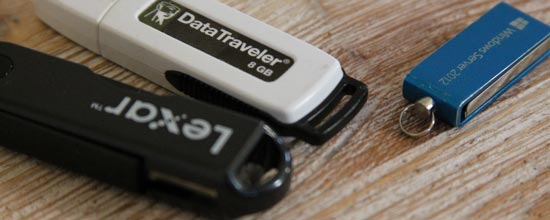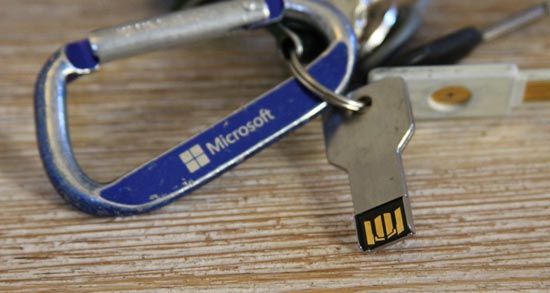Managing Dotfiles with Git
Professional cooks have a term: "mise en place", which translates literally to "everything in its place". In a kitchen, it means that your station is prepared and well-organized; all the ingredients for every dish that you cook are prepared and set out in front of you so that they're ready to use. But perhaps most importantly: your station is clean, because professional cooks have another phrase:
Messy station equals messy mind. Clean station equals clean mind.
This idea extends far beyond the kitchen and - yes - even into software engineering and IT. Don't believe me? Take a look at your computer... Unless you're excruciatingly well-organized, you've probably got a junk folder somewhere. I call mine "Temp" on the very optimistic idea that I'm just throwing things in there for a little while until I find the right place for them.
But the reality is that most things never leave; they just accumulate.
Just like in a kitchen, all this crud and all these little annoyances take a mental tax and make you less productive. That's why one of my guilty pleasures is to "repave" my machine, reinstalling everything onto a freshly formatted drive with no trace of the old detritus, then carefully reinstalling only the apps that I'm interested in and copying over only the data that's worth keeping.
I try to do this every year or two, both to my main personal machine and my main work machine. And it turns out that I just finished this up, since last week I had a little free time on my hands:
Just logged out of my last day at @GitHub. It's been fun, I've met great people and learned a lot, but I'm really excited about what's next.
— Edward Thomson (@ethomson) March 13, 2017
At a high level, this process is pretty straightforward: I back up my home directory (twice), format the drive, reinstall the operating system, and carefully copy the contents of my home directory back, tidying as I go. On the whole, this is pretty tedious, except for one set of files: my dotfiles.
Years of working with large networks of Unix machines has taught me to version control my dotfiles so that I can get up and running on any new machine quickly. I keep my dotfiles checked in to a git repository, except for the truly important ones - the ones that I need to keep secure, like my SSH keys - which I keep with me.
When I'm setting up a new workstation, I start by copying over my SSH keys since I'll actually need them in order to clone the rest of my dotfiles. (I skip this step if I'm setting up a new account on a remote machine, since I'll just use SSH Agent Forwarding to keep my keys on my local machine.)
I keep my most secure bits on a USB key that I keep with me. Most USB keys have some sort of attachment for a keyring - hence the name. Maybe it's a little lanyard, or a metal ring, or even a plastic tab of some sort.

These little keychain hooks are all going to break and your SSH keys will be left behind somewhere.
But just because you can attach these to a keyring doesn't mean that you should attach these to a keyring. That little hook is going to fall apart over time as you pull your keys out of your pocket or they jostle around in your purse, and one day your USB key isn't going to be attached to your keyring anymore. And then you've lost a copy of your SSH private key.
What I use is a USB key that is made from a hunk of aluminum:

My keychain will fall apart before this USB key does. This one was made by Lacie, but they discontinued it a few years ago. Now Samsung produces one and there's a generic one aswell.
This is much, much less likely to fall off my keychain unexpectedly. Even with that in mind, of course, I still turn on full-disk encryption to protect me in case I accidentally leave my keys laying around after a night out at the pub.
This particular key is an encrypted HFS+ partition for Mac OS, but I have a separate key for setting up new Windows machines, which is encrypted with Bitlocker To Go. (But more on that later.)
After copying over my SSH public and private key into my home directory, I run a script that clones my dotfiles repository from my personal Visual Studio Team Services account. (I use VSTS for private repositories and GitHub for all my open source repositories.) I keep this on my USB key so that it's handy:
#!/bin/sh git clone --separate-git-dir=.dotfiles.git ethomson.visualstudio.com:DefaultCollection/personal/_git/dotfiles . rm .git echo '*' > .dotfiles.git/info/exclude
This script is pretty simple, but there are a few odd things going on:
-
It uses the
--separate-git-diroption togit clone. It does this so that my git repository in my home directory is called.dotfiles.git, instead of the usual name,.git. This is important so that when I rungitsomewhere in my home directory it doesn't accidentally do work inside my dotfiles repository.In particular, I might be somewhere beneath my home directory - say in
~/src/my_new_project- and rungit status. If I haven't yetinited a repository for my new project, then I'll actually see the status for the git repository in my home directory that controls my dotfiles. This is confusing at best; it's best to make this a separate git directory instead. -
This removes the
.gitfile thatgit clonecreates. When I clone with aseparate-git-dir, git will helpfully set up a.gitfile that points to that separate git dir so that future invocations of git can find it. This would be useful if my goal was to put the git directory on another device but still have it work transparently as if it were a normal git repository.That transparency is exactly the behavior I don't want, though. By removing this file, I'll get the isolation that I wanted in step 1, but I'll have to specify the
git-direvery time I run git to work on my dotfiles. (More on that below.) -
This sets up an
info/excludein the dotfiles git repository with a*wildcard. This means that all untracked files in my home directory will be ignored. As a result, I will have to explicitly add new files to my dotfiles repository. Without this,git statuswould show all the files underneath my home directory which is very noisy and - worse - makes it very easy to accidentally add things like my SSH keys.I could also accomplish this with a
.gitignore, but then I've got a.gitignorehanging out in my home directory and the whole point of repaving my machine was to clean up the unnecessary cruft in my home directory.
As a consequence of using a separate git directory for my dotfiles, I
can't simply run git commands - like git status - in my home directory.
If I do, git will tell me that it can't find a repository:
fatal: Not a git repository (or any of the parent directories): .git
Instead, I need to explicitly pass the --git-dir option to git so that it
can find my repository. The easiest way to do that is to set up an alias
in my shell's startup configuration.
I have this in my .zshrc:
alias dotfiles="git --git-dir=$HOME/.dotfiles.git"
Now instead of running git status, I run dotfiles status:
On branch master
Your branch is up-to-date with 'origin/master'.
Changes not staged for commit:
(use "git add <file>..." to update what will be committed)
(use "git checkout -- <file>..." to discard changes in working directory)
modified: .zshrc
no changes added to commit (use "git add" and/or "git commit -a")
And it's straightforward to dotfiles add .zshrc, dotfiles commit and
finally dotfiles push to get my changes back up to my hosted git repository.
I simply replace git with dotfiles in any command I want to run when
I want to work on my dotfiles repository.
The only thing to remember is that - by virtue of my info/excludes above -
I'm ignoring all the files in my home directory that aren't already part of
the repository. This means that when I create a new file in my home
directory, git ignores its presence:
On branch master
Your branch is up-to-date with 'origin/master'.
nothing to commit, working tree clean
This is generally what I want; most of my home directory probably shouldn't be under version control or pushed to every computer that I use. But when I do create a file that I actually want to push to my dotfiles repository, it's easy for me to add:
dotfiles add -f .dotfile
The -f flag is necessary to override the info/excludes file. If I
forget it, git will remind me. Once the file is staged, now git will begin
tracking it, and dotfiles status will show:
On branch master
Your branch is up-to-date with 'origin/master'.
Changes to be committed:
(use "git reset HEAD <file>..." to unstage)
new file: .dotfile
This straightforward setup lets me get my home directory configured on a new machine quickly and easily, and if I make any changes on that machine, I can share them with my home directory on every computer just by pushing and pulling.